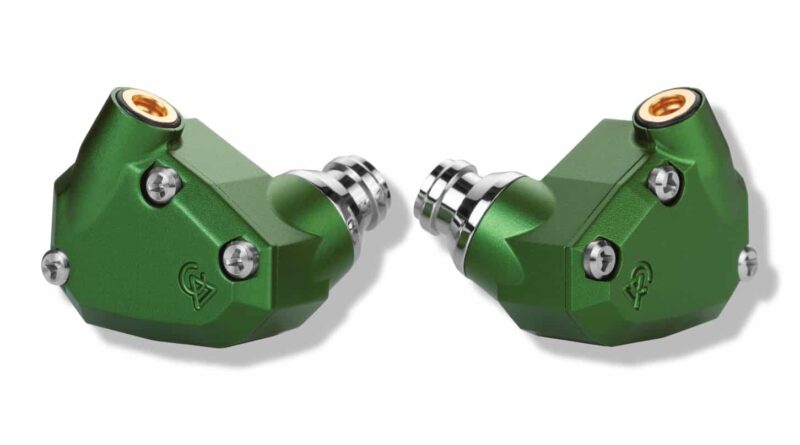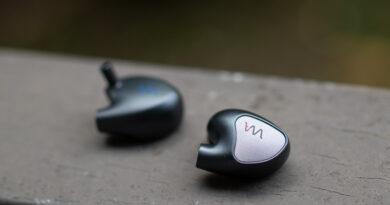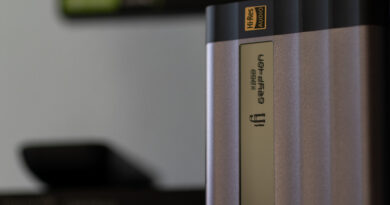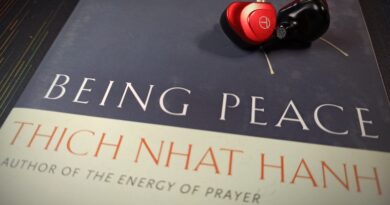Campfire Andromeda 2020 Review (1): Out-Standing Identity
A sort of mythological entity guards the entrance of the over-kilobuck IEM market segment since 2016, and that’s Campfire’s ultrafamous Andromeda. For how odd it may sound I never got to audition those… In conjunction with the release of the new product revision, however, the gap has been filled and I’ve been provided a sample of the new product iteration named Andromeda 2020 (retailing at $1099).
I’ve been auditioning them for quite a while now and to be frank I would need extra time to deliver an even more matured opinion. The reason is simple in its complexity: Andromeda 2020 are no easy individuals. On them I see hear a number of glorious lights and some shadowy parts, and I’m writing about each one here below of course, but much beyond that, Andromeda 2020 are one of those few devices where the articulated ensemble makes up for something more and beyond the sum of its parts.
[ In parentheses, this is not the first driver granting me such feeling, and in my experience such “magic” is not strictly related to the product’s market segment – read: price – but let’s not digress here ]
With this in mind, let’s take a look at the details first, then we’ll quikly climb up onto the big picture.
In this Article
At-a-glance Card
| PROs | CONs |
| Comprehensive sound experience. | “BA timbre”, aka lack on microdynamics. |
| Five drivers playing as one: a superb cohesive tuning. | Could use more texture, especially in the bass. |
| One of the best treble tunings I ever heard. | Musicality lacks some drama for my taste. |
| Beyond spectacular soundstage, imaging and layering. | Non-trivial source required |
| Good mids. |
Full Device Card
Test setup
Sources: Apogee Groove + Burson FUN + IEMatch / Questyle QP1R / Sony NW-A55 mrWalkman / iFi Micro iDSD Signature – Comply Foam TS-400 tips – stock Campfire Silver Plated Litz cable – lossless 16-24/44.1-192 FLAC tracks.
Signature analysis
| Tonality | Andromeda 2020 deliver a clear&clean timbre, with a definite BA-accent. The presentation is a W with an almost pure natural-balanced tonality. For my personal taste a whiff more of body (dacay) on the bass notes would make it 100% “organic” when rendering acoustic music. |
| Sub-Bass | Sub bass is fully extended and rumble is there, just never authoritative due to the driver’s snappyness |
| Mid Bass | Andromeda’s midbass is forward but flat, which gives it some good presence while always keeping a “baseline” role and never coming upfront, and a very faint warm color. Transients and implacably “BA-level” so notes are almost edgy, lean but most of all very scarce in microdynamics. Andromeda 2020 are not the IEM you want if you’re after accurate (mainly, but not only) bass texture restitution. |
| Mids | Mids are very well done, almost silky smooth yet vivid, articulated and detailed – a very subtle balance between precision and expressiveness. Like bass, a taint of warmth is present. And like oon bass – although to a lesser extent – in terms of critical listening transients are a bit too fast to deliver truly organic sound. That being said mids’ clarity, cleanness, authority paired (again) with extremely accurate smoothness is nothing short of oustanding, and frankly a pleasure to listen to “as-is”. |
| Male Vocals | Male vocals come accross very well in terms of clarity and definition. Some butter is missing (like it does on the entire Andromeda presentation really) to make them glorious. |
| Female Vocals | Female vocals are clear, articulated and authoritative. Their timbre is a tad slim, and they lack that last 5% of texture to sound flutey, which is – again – probably intended by the tuners. In positive, these are most likely the most forward, vivid, crisp female vocals nevertheless succeeding in staying always off sibilance or shoutyness I encountered yet. |
| Highs | Together with technicalities, trebles is where Andromeda 2020 get stunning. A truly masterful balance between definition and control has been reached here. Extension is good, air is also good and not excessive, presence trebles are vivid, detailed and sparkly while never scanting into excesses like shrills, or sibilance. I do prefer adopting foams in this case (see below) but even smallbore silicons dont make Andromeda 2020 misbehave up there (enough said, I guess). |
Technicalities
| Soundstage | Andromeda2020 have a near-holographic stage, just height is a tad less extended than the other 2 dimensions but I’m noting this exclusively because I’m a nasty nitpicker |
| Imaging | Beyond spectacular. Image distribution on the stage is perfect at all time both on the periphery and at the center. |
| Details | Detail retrieval from highmids and trebles is frankly as good as it can possibly get without scanting into excessive thinness and the directly consequent metallic coloration. In conjunction to what’s mentioned above about bass and mids, a slight bit more relaxed transients over there would grant better detailing on those segments too. |
| Instrument separation | Another excellent aspect on Andromeda 2020 is separation and layering. Paradoxically, their prowess on this contributes to reveal the relative scarceness of tonal nuances especially from circa 2K down. |
| Driveability | That’s where it gets tricky: less than 13 ohm impedance and a sensitivity of almost 123dB/mW are no joke for any amp, especially that vast majority of deevices out there aimed at people stubbornly looking for “powah” instead of quality and control. Paternalistic rants apart, Andromeda 2020 are seriously picky, and get hissy even when paired to some source of high repute so don’t be too angry if it happens to you too. Pro tip: an IEMatch can do wonders, but be warned you’ll need to switch it to Ultra this time (-24dB attenuation…) |
Physicals
| Build | Andromeda 2020 housings are made of machined aluminum, with a high quality anodized external finish. Smaller in size compared to the previous version, they feature a specially designed internal “shape”, which according to Campfire is solely in charge of the 5 drivers’ reciprocal calibration – no crossover or other filters are employed, anyhow. |
| Fit | I find them easy to fit, both if I choose a shallower positioning or a deeper insertion. Tip selection has been just a bit less painful than my usual case: by far I prefer comply TS here [*]. Alternatively, final E silicons (nicely included as stock) are more than OK if I am keen on a even sharper / colder variation for one day. [*] Campfire’s own foam tips are quite underwhelming in comparison. |
| Comfort | Luckily I find Andromeda 2020 very comfortable but you sadly can’t rely on this. Although not big, housings feature unrounded edges so they may well be [partially] uncomfy on someone else’s outer ear. Gotta try. |
| Isolation | When worn with foam tips, Andromeda 2020 offer me very high isolation |
| Cable | Andromeda’s bundled cable is good, both from the build and the sonic standpoints. I tried rotating an (equivalent high quality) pure-copper cable and while some low and mid nuances get improved, highmids and presence trebles’ definition gets too close to depletion – and sometimes pass the edge too. So silver plated it is, and it’s good. I do have one remark though: given the kilobuck package price I find it more than a bit disappointing that a single cable termination option is merely included. A multi-termination cable should really always be bundled at these pricing levels, and on this manufacturing tier. |
Specifications (declared)
| Housing | Machined aluminum shells with anodized emerald green outside finish. “Tuned Acoustic Expansion Chamber™” internal structure |
| Driver(s) | 2 BA for high frequencies, 1 BA for mid frequencies, 2 BA for low frequencies [BA manufacturer undisclosed] |
| Connector | Custom Beryllium/Copper MMCX |
| Cable | Campfire Audio Litz Cable – Silver Plated Copper Conductors with Berylium Copper MMCX and 3.5mm Stereo Plug |
| Sensitivity | 94 dB SPL @ 1kHz: 7.01 mVrms = circa 123dB/mW |
| Impedance | 12.8 Ω |
| Frequency Range | 10 – 28000 Hz |
| Package & accessories | Campfire Audio Sustainable Cork Earphone Case – Final Audio Tips (xs/s/m/l/xl) – Campfire Audio Earphone foam Tips (s/m/l) – Silicon Earphone Tips (s/m/l) – Campfire Audio Lapel Pin – Cleaning Tool |
| MSRP at this post time | $1099,00 |
Considerations and conclusions
Analysing Andromeda 2020 require the usual 2 – 3 pages. What I reported might be agreed upon or not, as always, but as I mentioned at the beginning there’s a higher layer here: Andromeda 2020 have a comprehensive personality going beyond their timbre, their tonality, and all that technical jargon.
At the current status of my experience, I would report Andromeda 2020 as a greatly clean, skillfully musical, detailed and smooth acoustic performer. Their solid identity evidently stands-out from the mere, arid list of their elementary parts – that’s my point – and reaches the user before, and with more authority than each and all of those.
Andromeda 2020 deliver a proficient, clear, expansive musical experience. Critical-listening to them, going with a flashlight looking for the reason why bass is like this, mids are like that is … nearly preposterous.
By the way, if you are one of my usual “25 readers” you know that Andromeda 2020’s signature does not match my ideal preferences – I find their musicality too engineeristic. They lack drama, for my taste. Even that considered, though, Andromeda 2020 genuinely appeal me to “just putting them on” and go with the smooth, articulated, open musical flow they grant.
Finally, and on the flip side, it’s important to underline that they “don’t come easy”, not even a bit. Their purchase price is “important”, and chances are they may trigger the need for a source upgrade, which might possibly cost another pretty penny… So be warned!
Disclaimer
The Andromeda 2020 sample has been provided free of charge by the manufacturer. They can be purchased here. As always, we are not affiliated, don’t get commission, etc.
Our generic standard disclaimer.









